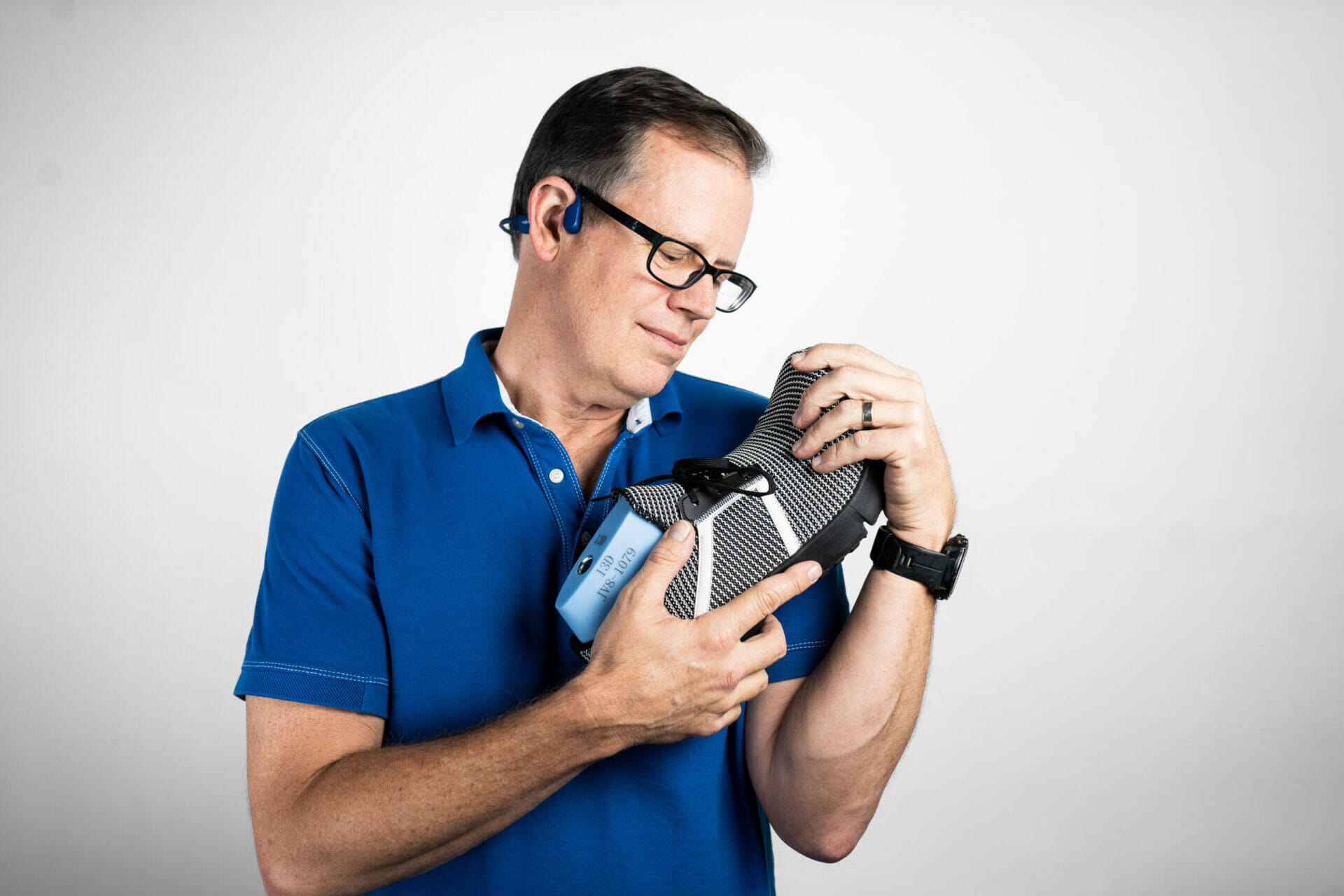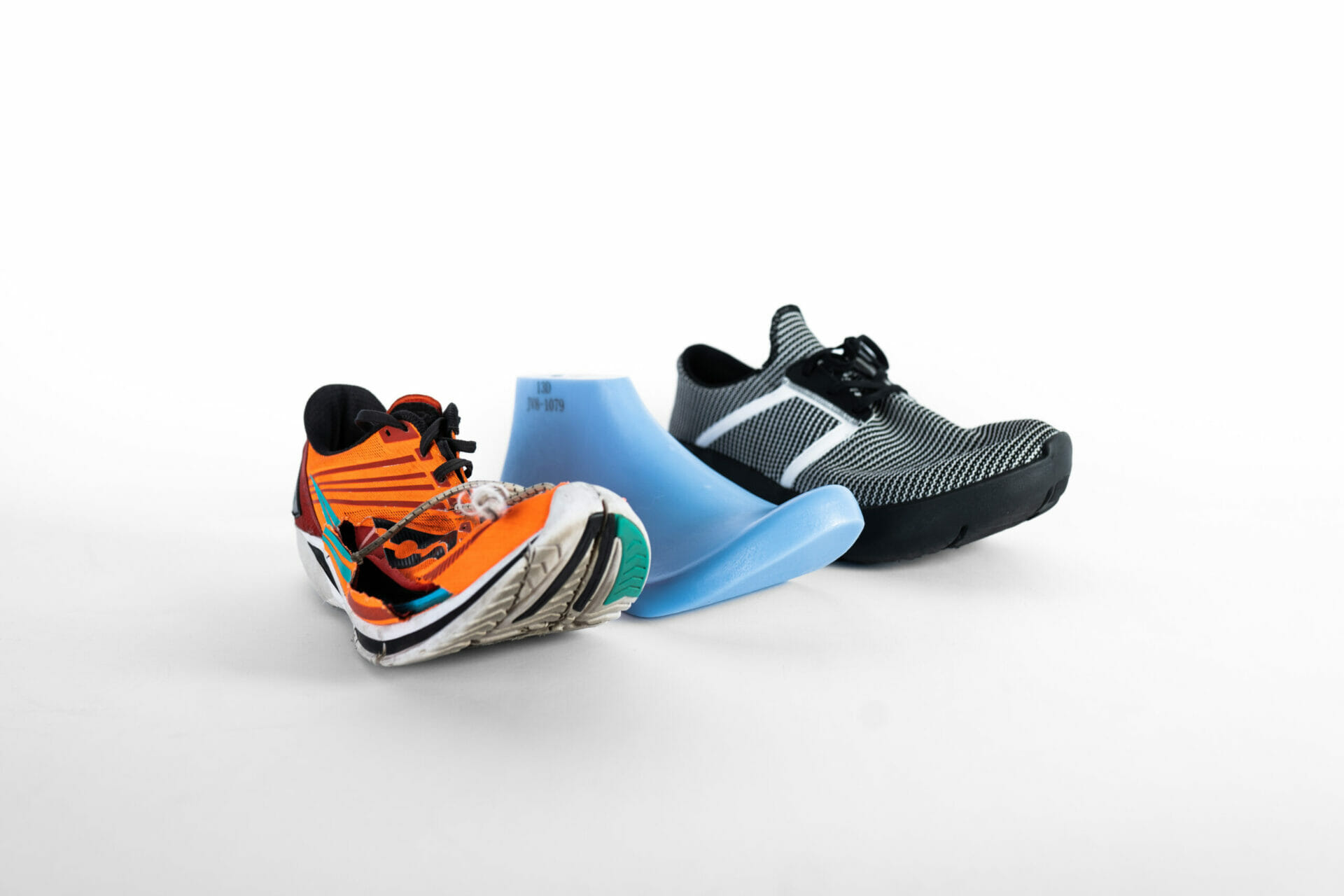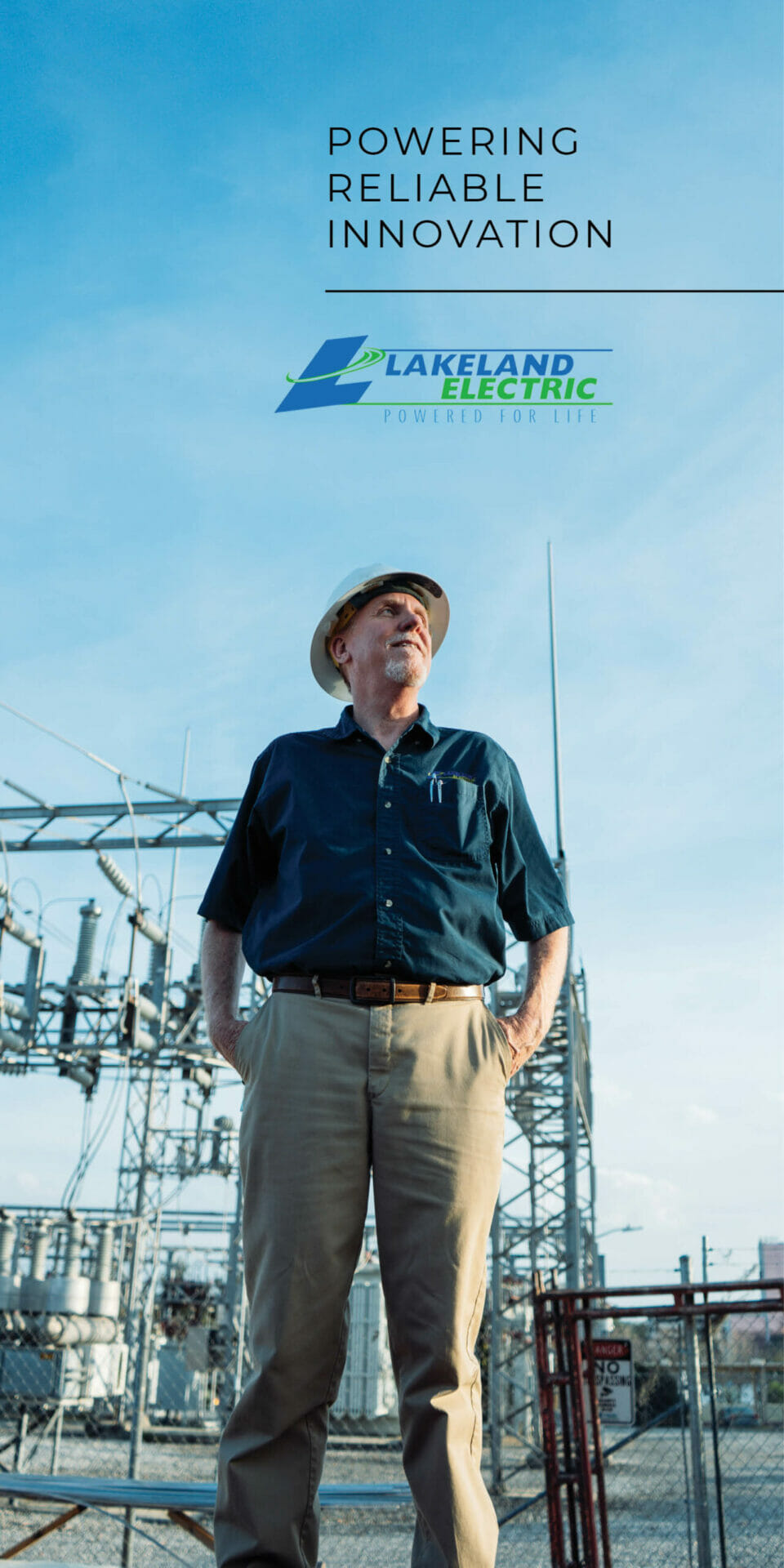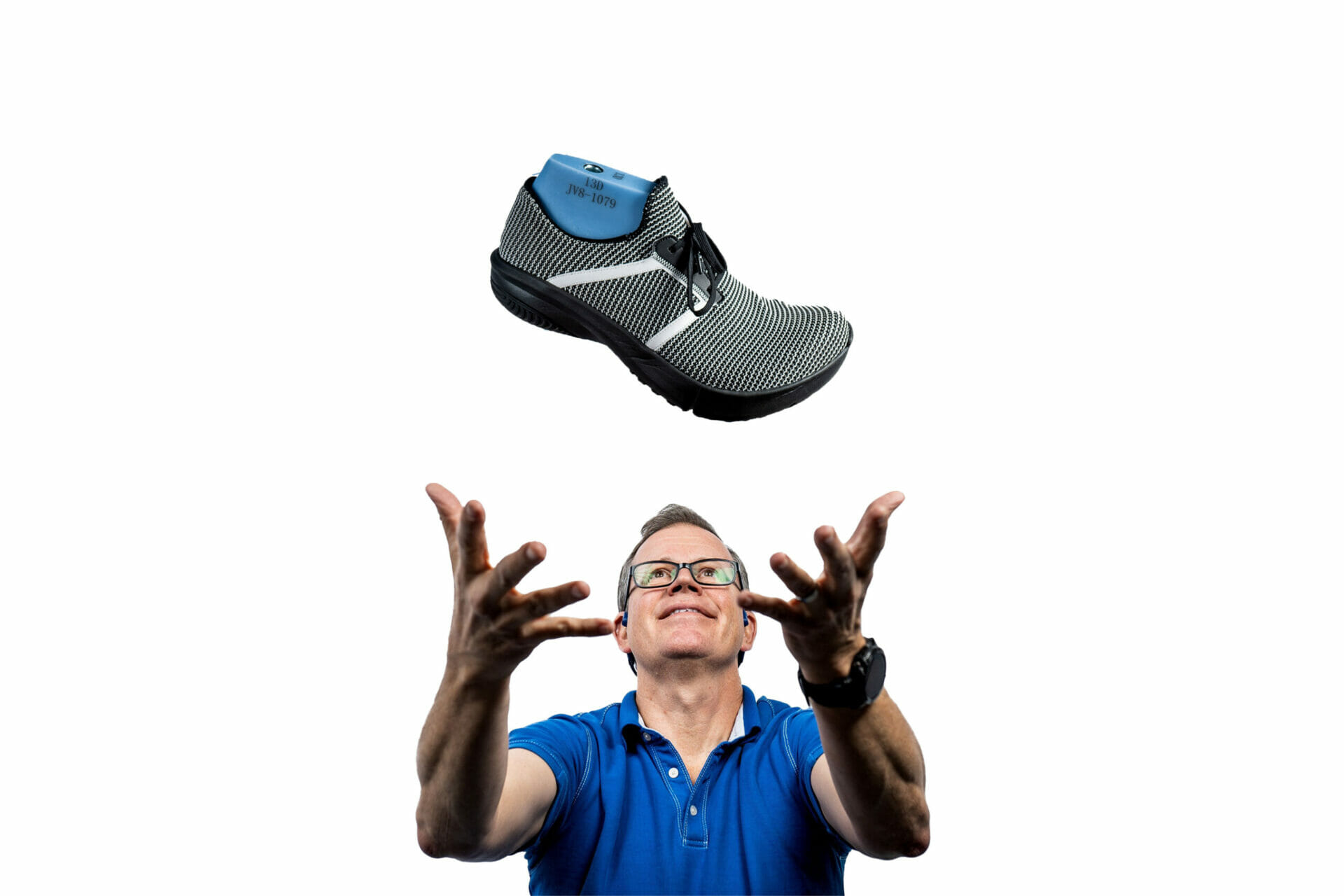
Building a More Natural Running Shoe
Former LOCAL FITNICHE OWNER BRINGING NEW SHOE TO MARKET IN 2023
By Diego De Jesus
Photography by Jordan Randall
ichard Wills was at his son Erik’s cross-country practice at Holloway Park and noticed some of the local college runners were barefoot on the trail. He decided he wanted to try it himself.
After a good day of rain, when the earth was soft, Wills ran loops around Holloway Park barefoot along the well-manicured trails and was inspired to design his upcoming sneaker, the Holloway. It will be part of his brand, First Ray Athletics, which he established last year.
“It was like scales fell from my eyes. I was awash in sensory experiences coming from my feet, which I had never felt before. I realized that my feet were doing all sorts of things that I never noticed that they did in shoes.” – Rich Wills
Running is a tradition in Wills’ family, including joining his father on nightly runs as a child and getting his own son involved in cross-country racing. Wills established a business that stemmed from this generational tradition.
Wills is the former owner of FITniche, a specialty store that sold a slew of running products. His intention was originally to develop the Holloway and sell it in FITniche’s three locations, but that was before Fleet Feet purchased the business in 2021.
Wills’ curiosity about launching his own shoe line only grew with his passion, and he saw FITniche’s sale as a sign to begin the process.
After his ethereal moment at Holloway Park, Wills wanted to replicate the comfortable sensation of running barefoot on soft earth on roads and sidewalks while wearing shoes. He purchased many sneakers hoping to achieve some semblance of the same experience, and he couldn’t find one that provided adequate cushioning.
The sneaker’s design encourages the foot to do anything it would naturally do barefoot on earthen surfaces on artificial surfaces such as concrete and pavement. It has a very intricate design with a plethora of meaning behind it. Wills asked the late Ed Holloway–Holloway Park’s namesake–if he could name his prototype after Holloway, and he received his permission.
On the sides of the Holloway are Holloway Park’s coordinates of its longitude and latitude.
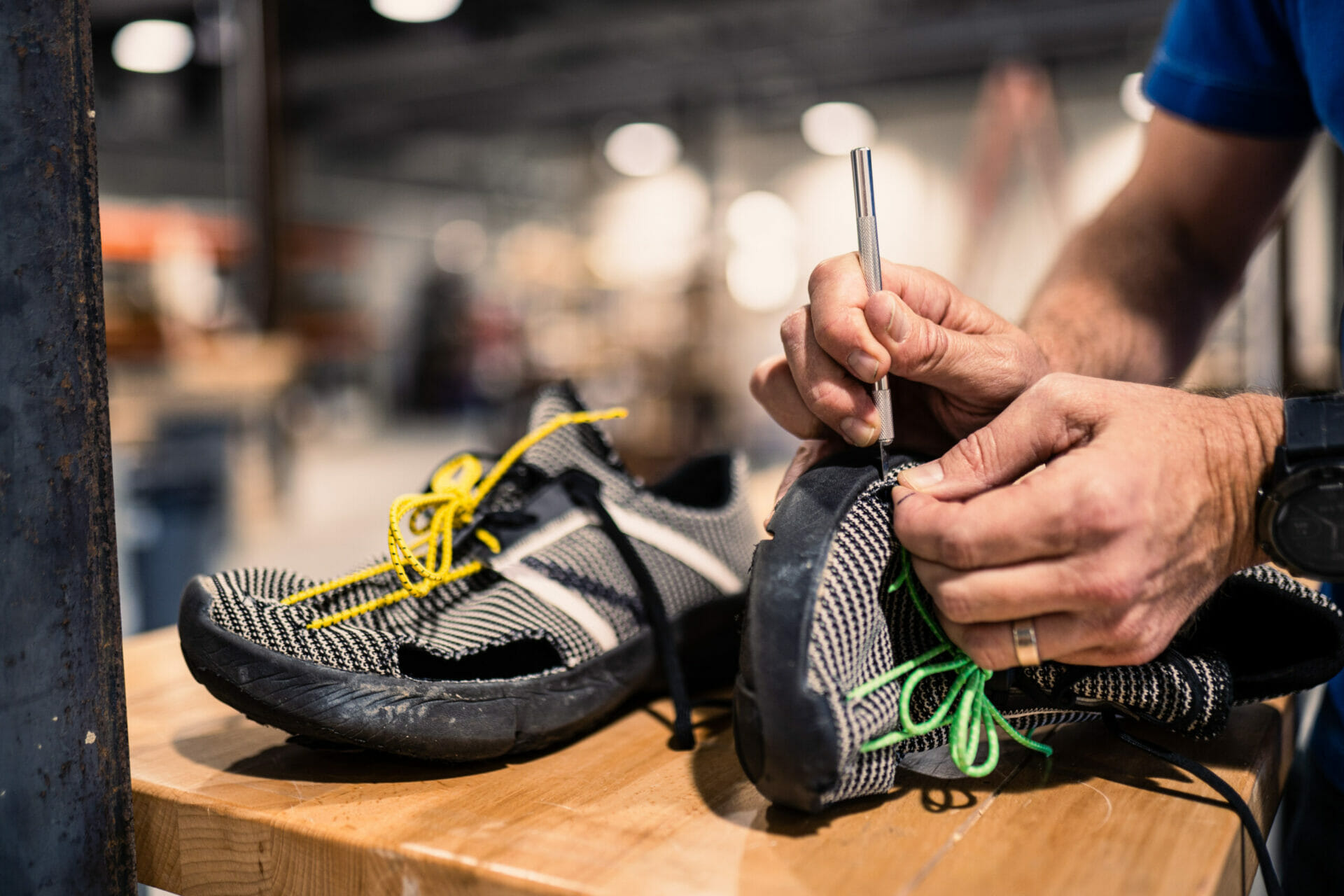
Wills has been working on the Holloway for more than a year at Catapult, where he’s used the Makerspace to modify existing prototypes. The Holloway is entirely funded by Wills, thanks in part to the proceeds he earned from the sale of FITniche.
He began by consulting with many professionals and conducted extensive research about the structuring of the foot before he started. Everything from the design down to the fabric intends to replicate the experience that began Wills’ endeavor.
“The first thing I did was I began reaching out to people in the industry I knew, just looking for advice,” Wills said. “I started off with all these medical professionals in exercise physiology wanting to understand why we lift our toes, what the foot was doing and how it works.”
Latest
Lakeland’s Own Vintage Ford
Lakeland's Own Vintage Ford Written...
Baker Undercover
Baker UndercoverBy Julianne...
Driven by Passion: The Larry Dobbs Story
Driven by Passion Written by Donald...
What is a Lakelander? | Bill Castle
What is a Lakelander? Bill Castle By...
What is a Lakelander? | Jairus Rutherford
What is a Lakelander? Jairus...
Wills found most people were helpful and liked to share what they were passionate about. He learned everything he knows now by simply asking, even people at other sneaker companies who will eventually be his competitors.
Interestingly, Wills found that there was little to no research done on the biomechanics of the foot. What he found would be the primary focus of the Holloway’s design.
It’s a common assumption that the toes lift up while the foot travels through the air to prevent stubbing them on foreign surfaces, but Wills found this not to be the case. Wills found that the toes, like many major muscle groups in the body, including the quads and calves, undergo a process called pretensioning.
Pretensioning is where muscles tense up slightly and mitigate impact force, allowing the rest of the body to relax and spread out the impact to other muscles. This process also causes muscles to generate higher peak reaction forces and faster reaction times in each step.
“As your foot lands, your toes are up,” Wills said. “They come back down one toe at a time in an accordion-like fashion that spreads out the impact force over a slightly longer period of time, pushing it into different directions as well.”
The sneaker’s sole is divided into three rays. Each ray roughly aligns with one or two toes and supports each part of the foot while guaranteeing the mitigated impact force of soft dirt on artificial surfaces, recreating that original sensation as much as it can.
Wills found that 50-70 percent of all runners sustain injuries yearly, and this statistic has remained stagnant since the 1970s. Although he admits he can’t guarantee it, he hopes the Holloway will help bring this statistic down.
“No other shoe company builds shoes like this,” Wills said. “No shoe company starts from the foundational premise that they’re going to only encourage or allow the foot to do what it’s naturally already designed to do.”
A men’s version of the Holloway is set to be sold in retail this year, with factories in Vietnam and South Korea producing prototype models of the sneaker. Two dozen volunteers will be testing out these prototypes for six weeks.
After their feedback and some design revisions, Wills will prep the product for market and also begin further development of a women’s version of the shoe.
After its final revisions, 3,600 pairs of the men’s Holloway will be shipped from Vietnam to Lakeland and sold in Central Florida retail stores. Will estimates they will be priced from $165 to $185.
“I hope I bring something to the world that is valuable to many other people,” Wills said. “I hope people think it looks great. I hope people think it feels great. I hope that it improves people’s biomechanics so that maybe even people are less likely to get injured due to running.”
First Ray’s website and social media will launch soon so patrons can purchase the Holloway and stay updated on the brand’s progress.
